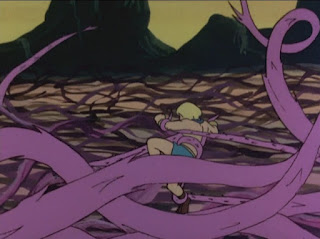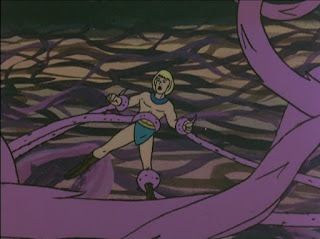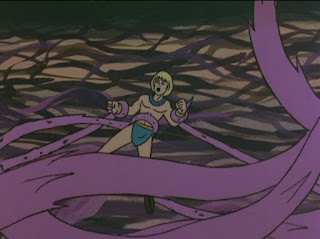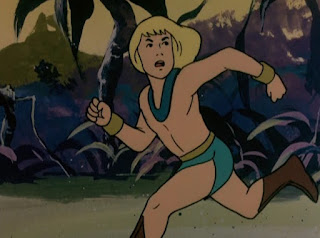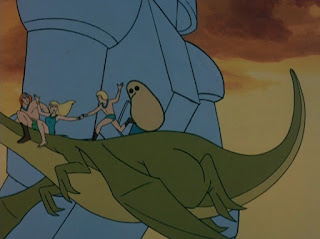Robin the Boy Wonder is the eager, youthful sidekick of Batman, the Caped Crusader, the vigilante crime-fighting alias of millionaire playboy Bruce Wayne. Introduced in 1940 as orphaned acrobat Dick Grayson in the DC comic book series Batman, Robin was played by Burt Ward in the 1966 television series on ABC.
As played by Burt Ward, Robin has a cute, boyish face, clean-cut, brown hair, and a compact, athletic physique which fits perfectly with his character's acrobatic background. His colorful outfit, with his dark green mask, gloves, and booties, his bright, red shirt, his shiny, yellow cape, his tight, green panties, and his form-fitting, flesh-color leggings, certainly catches the audience's attention.
Due to his youth, inexperience, and smaller size, the Boy Wonder is clearly the weak link in the Dynamic Duo, which their opponents often seek to exploit. Robin is also cocky, enthusiastic, and overly eager to prove his independent crime-fighting abilities, especially to Batman. He is often in trouble and in need of rescue.
This week's villain is the Great Chandell.
In the first episode, in the middle of a fight, the Great Chandell's evil twin brother Harry drops a large music roll on the Dynamic Duo. He then ties them up and puts them on a conveyor belt leading into a piano-roll-paper-cutting machine.
In the next episode, Batman and Robin escape by singing louder than the musical recording, resulting in the cutting machine's sparing the Dynamic Duo and cutting their bonds.
For fans of Robin peril, it may be worth noting that Harry positioned Robin the Boy Wonder, the youthful sidekick, to die first, strangely before the more dangerous and capable Caped Crusader.












